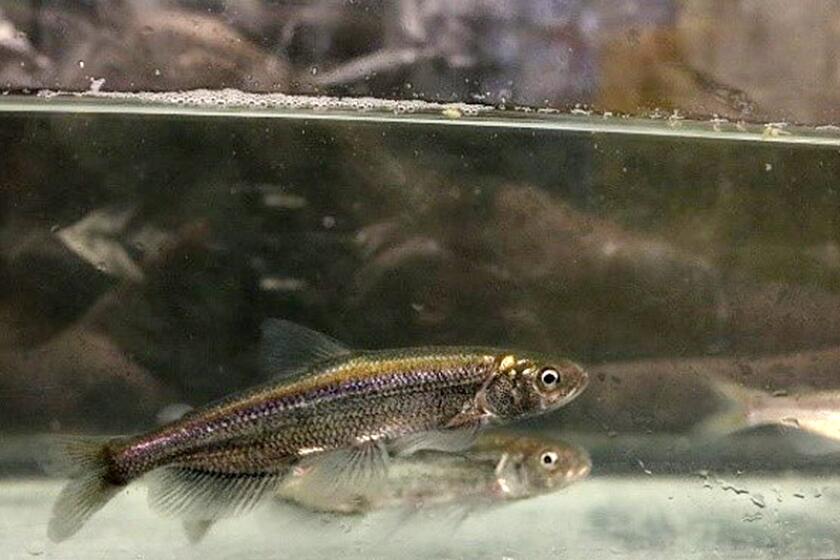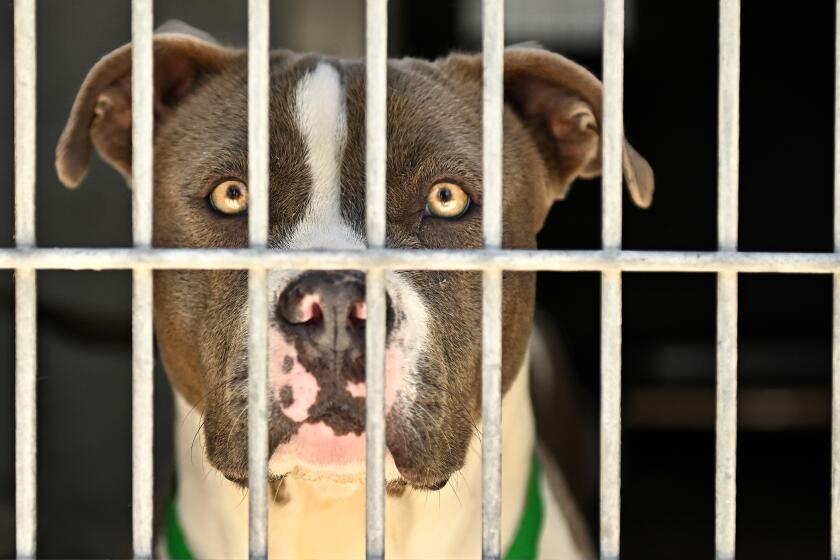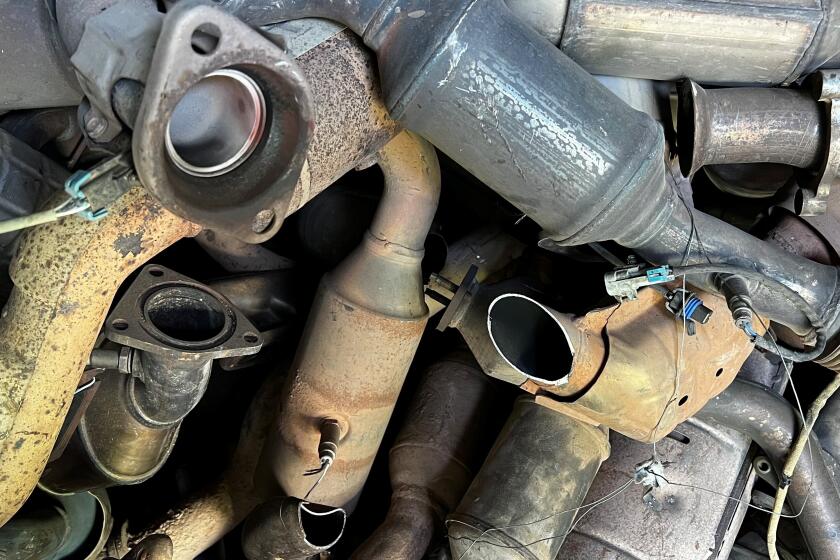3 More Sea Lions Found Dead Along Huntington Beach : Wildlife: The total number of carcasses discovered on city shores is 143. The climatic effects of El Nino could be a factor. A large number of underweight and dying marine mammals are also turning up.
- Share via
HUNTINGTON BEACH — Three more dead California sea lions were found along the shores of Huntington and Bolsa Chica state beaches Wednesday, adding to the 140 carcasses that have already been found on beaches here since May.
Beach-goers, lifeguards and beach work crews have been discovering a dramatic number of dead sea lions on a regular basis during the past two months--including nine found Tuesday, said Lt. Mike Beuerlein of the city marine safety office.
“Only one of the sea lions had a gunshot wound; the rest appeared to have died from natural causes,” Beuerlein said.
The unusually high number of sea lion deaths could be attributed to El Nino, a climatic condition that forces warm water currents close to California and drives out cold-water fish.
“These sea lions rely on those fish as their food source and there’s been less food to go around,” Beuerlein said. “In addition, the sea lion population has increased by 5% over the last three years. A lot of them are starving to death. It’s survival of the fittest.”
The most frequent victims are the younger sea lions, which cannot compete as well for the food, said Joe Cordaro of the National Marine Fisheries Service in Long Beach.
“Most . . . have been dead for two or three weeks before washing up to shore,” he said. “I think a lot are washing up in the Huntington Beach area because of the way the ocean currents are going at this point.”
Work crews have been burying the sea lions in holes six to eight feet deep along the beach. If foul play is suspected, they deliver the carcass to the National Marine Fisheries Service, where an autopsy is done.
In addition to the carcasses in Huntington Beach, a large number of underweight and dying marine mammals have turned up on beaches throughout the county, particularly in Newport Beach, said Lori Genetive of the Friends of the Sea Lion Center in Laguna Beach.
Genetive said 140 marine mammals--including California sea lions, northern elephant seals and harbor seals--have been brought to the center since January. More than 75% of them have survived and been returned to sea.
Officials say the recent sea lion deaths are the most since 1989--when dozens of carcasses were found in Huntington Beach--but there were other concerns then.
“There was evidence of foul play,” Beuerlein said. “Some had been caught in fishermen gill nets, some had been decapitated and others had been shot. We haven’t had those kinds of signs this year.”
Beach-goers who discover a sea lion or any other species of marine mammal, dead or alive, should stay away from it and report their finding to the nearest lifeguard, Beuerlein said.
“If it’s dead, it carries bacteria and disease,” he said. “If it’s alive, don’t approach it because they are very territorial and they do bite and their bite is 100% more infectious than a human bite.”
More to Read
Sign up for Essential California
The most important California stories and recommendations in your inbox every morning.
You may occasionally receive promotional content from the Los Angeles Times.










